巻号一覧

36 巻 (1988 - 1989)
- 4 号 p. 267-
- 3 号 p. 171-
- 2 号 p. 71-
- 1 号 p. 1-
36 巻, 4 号
選択された号の論文の5件中1~5を表示しています
- |<
- <
- 1
- >
- >|
-
田畑 和男, 五利江 重昭, 川村 芳浩1989 年 36 巻 4 号 p. 267-276
発行日: 1989/03/15
公開日: 2010/09/07
ジャーナル フリー3倍体ヒラメの飼育特性と成熟に関する知見を得るため, 同腹の3倍体群と通常発生群を最高31ケ月間比較飼育し以下の結果を得た。
1) 3倍体群のふ化後の初期段階と餌付け期における成長は劣るが, 以後の成長は通常発生群と差はなかった。
2) 3倍体群の生残はふ化後の初期段階と餌付け期に劣った。
3) 産卵期間中の成長は3倍体群と同様に通常発生群においてもみられた。
4) 通常発生群の雌では生殖腺指数が増加し続けるのに対して, 3倍体群の雌は微増するにとどまった。しかし, 雄では両群の生殖腺指数はほぼ同様の経過をたどった。
5) 生殖腺の組織学的観察, 走査電顕の観察および交配試験から, 3倍体の雌は不妊と言えるほか, 3倍体の雄についても不妊であることが明らかになった。これは精子変態が完全に行われていないためであろうと考えられた。抄録全体を表示PDF形式でダウンロード (10127K) -
鈴木 伸洋, 柵瀬 信夫, 杉原 拓郎1989 年 36 巻 4 号 p. 277-289
発行日: 1989/03/15
公開日: 2010/09/07
ジャーナル フリーMorphological development of the oriental goby, Acanthogobius flavimanus reared from eggs to juveniles in the laboratory at Sagami Bay, Japan is described. During mid February ovarian maturation is successfully induced by injection of the LH-releasing hormone of Gonadotropin. The dose of the hormone was 5IU/g body weight and was injected 4 times at an interval of one day for ovulation at water temperature of 12 to15°C. Artificial fertilization was accomplished on the first of March, 1985. The numberof ripe eggs removed artificially was about 25, 000. The eggs immediately after insemination are spherical in shape, measuring 0.99-1.10 mm in diameter. They have a bundle ofadhesive filaments at their basal end and a cluster of small oil globules. The egg membrane elongates to form a perivitelline space when the inflation ceases about 30 minutes after insemination. The eggs alter ellipsoid shape and measure about 3.93 mm on the long axis. Hatching began about 18 days after insemination at water temperature of 15.0-15.4°C. Soon before hatching, embryos fold down the tail at the basal end region of eggshell. The newly hatched larvae are 4.13-4.86 mm in total length (TL), with 31 (13+18) myomeres. The larvae usually lay on their body on the bottom of the aquarium. Many melanophores and guanophores are distributed on eye cups, gas bladder, intestine and in the caudal region. Complex of pigments form a band in the caudal region, but the band is never connected with the pigments on intestine. This character is not shared with larvae of A. hasta and A. lactipes. Seven days after hatching the yolk was completely absorbed and the larvae attained a total length of 5.73-6.10 mm.The larvae swim actively in the aquarium and start to practice feeding on the rotifer. Twenty days after hatching, the larvae averaged 9.01 mm in TL and the caudal notochord flex at 45°. Rudimental second dorsal, anal, caudal and ventral fins are also formed. The larvae attained 11.00-15.00 mm in TL, thirty five after hatching, are found to transit the bottom-life and first dorsal and ventral fins are completely formed. During the late postlarval stage, the fish is nervously to develop the free neuromast on the skin surface. The larvae reached the juvenile stage at 45-50 days after hatching and attained 13.85-24.90 mm in TL. At this period all scales appeared on the body. A clear black spot on the first dorsal fin is characteristic at the immature stage of the fish. The larvae and juveniles were reared by feeding them with the rotifers, Artemia nauplii, krill meat and lugworm meat for one year. The growth of larvae and juveniles in 1985 is expressed by the following equations.
Y1=4.697×1.034x (0≤X≤45)
Y2=0.716X-14.123 (46≤X≤170)
Y3=160.18lnX-715.90 (171≤X≤330)
where Y is the total length (mm) and X is number of days after hatching. The fish grew to 189.55-232.70 mm in TL and became mature in one year. Most of the individuals attained gonadal maturation and died after spawning.抄録全体を表示PDF形式でダウンロード (3462K) -
大家 正太郎, 南坂 恵洋, 田中 啓陽1989 年 36 巻 4 号 p. 291-295
発行日: 1989/03/15
公開日: 2010/09/07
ジャーナル フリーNitrogen in the feed ingested by fish is balanced quantitatively by growth in body nitrogen, excreted nitrogen and nitrogen in egested faeces. Judging from growth efficiency of fish, a large proportion of the ingested nitrogen is removed to the rearing water in various forms of nitrogen as metabolic waste and egested faeces. It may be considered, therefore, that abundant nitrogen as food has a harmful influence upon the aquatic environment in the rearing tank.
This paper describes the nitrogen flow in the tank from the viewpoint of the nitrogen budget. Every item in the budget was estimated independently and measured as directly as possible.
The nitrogen load as feed into the tank is 0.282 g-N/l during 44 days of the rearing period. This nitrogen load converts to 0.123 g-N/l or 43.6% of DON, 0.028 g-N/l or 9.9% of PON, 0.027 g-N/l or 9.6% of DIN, 0.097 g-N/l or 34.4% of growth and 0.007 g-N/l or 2.5% of other. Total organic nitrogen concentration (DON+PON) increases at the rate of about 50% of the nitrogen load.抄録全体を表示PDF形式でダウンロード (536K) -
堀内 三津幸, 宮澤 真紀, 中田 実, 飯田 九州男, 西村 伸一郎1989 年 36 巻 4 号 p. 297-305
発行日: 1989/03/15
公開日: 2010/09/07
ジャーナル フリー1987年の9月から11月にかけて, 東北地方のギンザケ淡水養殖場において発生した異常斃死例につき, 状況調査および病性鑑定を実施したところ, 以下のことが判明した。
1) 9月中旬 (水温14~15℃) から11月下旬 (水温9~10℃) までの累積斃死率は5.6%で, 斃死のピークは10月上・中旬 (水温12℃前後) であった。
2) 病魚に共通する外観所見は各鰭の欠損であり, 解剖所見としては肝の白斑形成が特徴的であった。
3) 寄生虫は検出できなかったが, 供試病魚 (7尾) には例外なくF.columnarisの皮膚感染が, 1尾にはR.salmoninarumの感染が認められた。血液寒天培地による内臓諸器官の細菌分離成績はすべて陰性であった。
4) 病理組織学的な特徴病変は, 肝の巣状壊死と脾のリンパ組織減少および壊死であった。
5) RTG-2細胞を用いて病魚よりウイルス分離を試みたところ, 多核巨細胞 (合胞体) 形成を特徴的なCPEとするウイルスが分離された。
6) 本ウイルスはその物理化学的性状および形態学的性状からヘルペスウイルス群に同定された。本ウイルスは抗OMV血清で中和されるが抗H.salmonis血清では中和されないことからSalmonid herpesvirus2に属し, 本邦で既報のヘルペスウイルス (OMV, NeVTAおよびYTV) と近縁と考えられた。
7) しかし, これらのウイルスとは粒子サイズが一致せず, またNeVTAおよびYTVとは異なり培養細胞に封入体を形成しないので, 本報ではギンザケ由来のヘルペスウイルスOK株として報告した。
8) 以上の検討結果から, 本症例の斃死原因はヘルペスウイルス病, カラムナリス病および細菌性腎臓病と推察された。抄録全体を表示PDF形式でダウンロード (6324K) -
1989 年 36 巻 4 号 p. 309-320
発行日: 1989/03/15
公開日: 2010/09/07
ジャーナル フリーPDF形式でダウンロード (1473K)
- |<
- <
- 1
- >
- >|